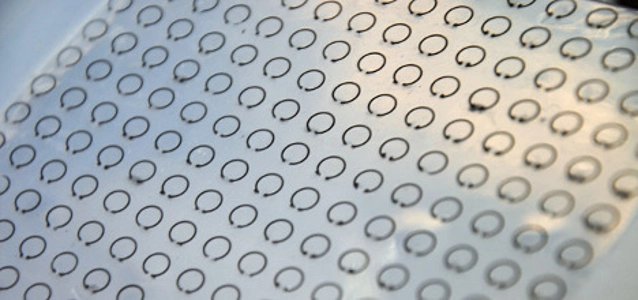
© iowa state university
General |
Iowa State engineers goes Sci-Fi – develops 'cloaking device'
Engineers at Iowa State University have developed a new flexible, stretchable and tunable “meta-skin” which uses rows of small, liquid-metal devices to cloak an object from the sharp eyes of radar.
The meta-skin has gotten its name from metamaterials, which are composites that have properties not found in nature and that can manipulate electromagnetic waves. By stretching and flexing the polymer meta-skin, it can be tuned to reduce the reflection of a wide range of radar frequencies.
The discovery was recently published in the journal Scientific Reports. Liang Dong, associate professor; and Jiming Song, professor at the Iowa State’s department of electrical and computer engineering were the leas authors.
“It is believed that the present meta-skin technology will find many applications in electromagnetic frequency tuning, shielding and scattering suppression,” the engineers wrote in their paper.
The engineers sought out to prove an idea; that electromagnetic waves – perhaps even the shorter wavelengths of visible light – can be suppressed with flexible, tunable liquid-metal technologies.
Rows of split ring resonators embedded inside layers of silicone sheets was what the engineers came up with. “The electric resonators are filled with galinstan, a metal alloy that’s liquid at room temperature and less toxic than other liquid metals such as mercury,” Iowa State University writes.
The resonators are small rings with an outer radius of 2.5 milimeters with a thickness of half a milimeter. They are position with a one milimeter gap, essentially creating a small, curved segment of liquid wire.
Tests have shown that radar suppression was about 75 percent in the frequency range of 8 to 10 gigahertz, according to the paper. When objects are wrapped in the meta-skin, the radar waves are suppressed in all incident directions and observation angles.



